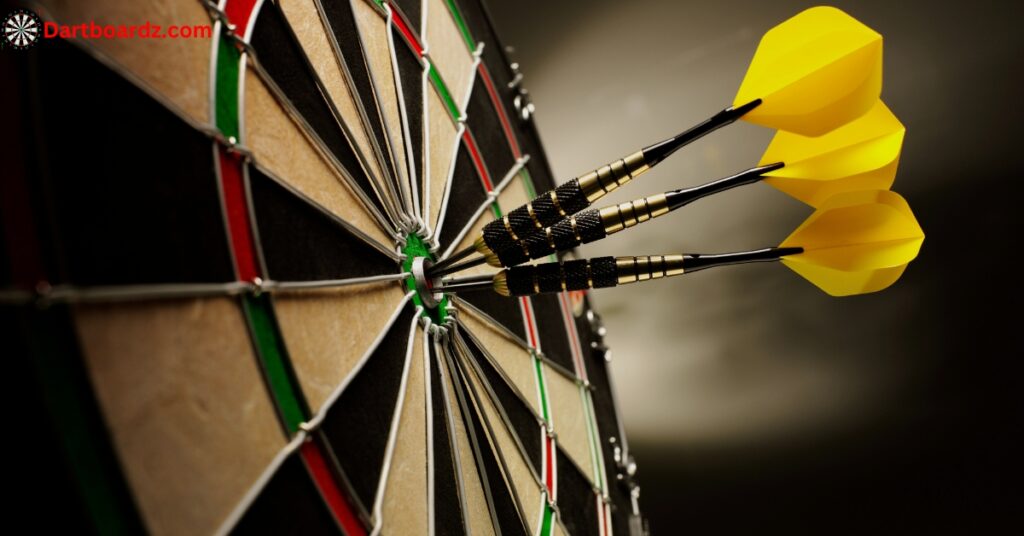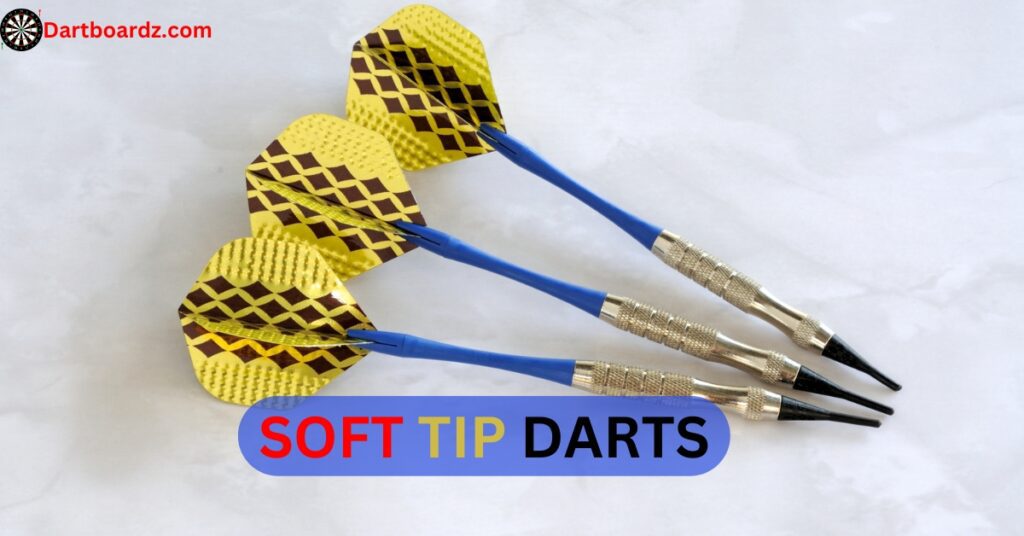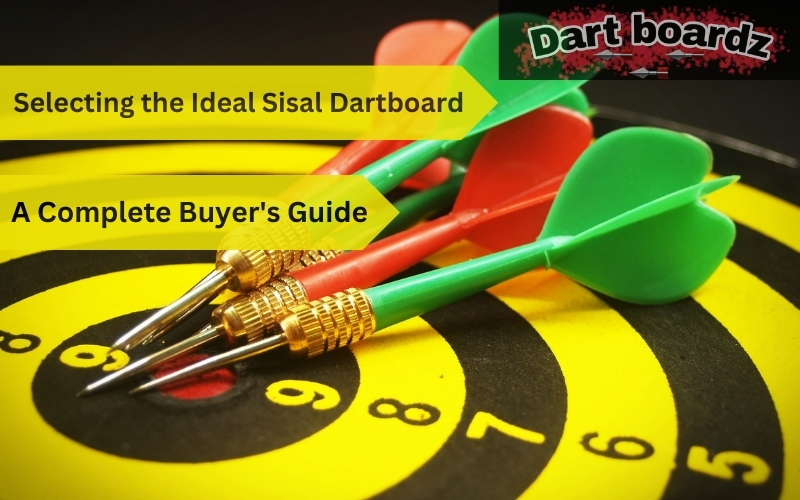Soft tip darts have become a staple in the world of darts, offering a safer and more convenient alternative to traditional steel tip darts. Whether you’re a casual player enjoying a game with friends or a competitive enthusiast honing your skills, selecting the right soft tip darts is essential for maximizing your enjoyment and performance. In this comprehensive guide, we’ll explore key factors to consider when choosing the best soft tip darts and provide valuable insights to help you make an informed decision.
Understanding Soft Tip Darts
Soft tip darts feature a plastic tip, typically made of materials like nylon or TPU (thermoplastic polyurethane), which is designed to stick to electronic dartboards.
Unlike steel tip darts that are suitable for bristle dartboards, soft tip darts are specifically engineered for use with electronic boards commonly found in homes, bars, and recreational centers. Their lightweight construction and flexible tip make them safer for use, especially in environments where safety is a priority.
Weight

The weight of the dart is a crucial factor that directly influences your throwing technique and overall performance. Soft tip darts come in various weights, typically ranging from 14 to 20 grams or more. Lighter darts offer greater speed and maneuverability, making them suitable for players who prefer a faster throwing style or have a lighter grip. On the other hand, heavier darts provide stability and are favored by players who prefer a more deliberate and controlled throw. Experimenting with different weights can help you find the perfect balance that suits your playing style and preferences.
Material
Soft tip darts are commonly crafted from materials such as brass, nickel-silver, or tungsten. Each material offers unique characteristics in terms of durability, performance, and price. Brass darts are an economical option, making them ideal for beginners or casual players.
However, they may lack the precision and longevity of higher-quality materials. Nickel-silver darts strike a balance between affordability and durability, making them a popular choice among recreational players.
Tungsten darts are highly regarded for their slim profile and exceptional performance, offering superior accuracy and consistency. While tungsten darts may come at a higher price point, they are an investment in precision and long-term enjoyment.
Grip
The grip of the dart barrel plays a crucial role in your ability to maintain control and accuracy during your throw. Darts come with various grip styles, including knurled, ringed, or scalloped patterns, as well as smooth barrels for a consistent release. Choosing the right grip depends on your personal preference, throwing technique, and comfort level.
Players who prefer a more aggressive grip may opt for textured barrels that provide enhanced traction and control, while those who prefer a smoother release may favor sleeker designs. Experimenting with different grip styles can help you find the perfect fit for your playing style.
Flight Shape and Size
The flight of the dart is another critical element that affects its trajectory and stability in flight. Flights come in various shapes and sizes, including standard, slim, kite, and teardrop, each offering unique aerodynamic properties.
Larger flights provide greater stability and lift, making them ideal for players who throw with more force or require additional control. Conversely, smaller flights offer reduced drag and are favored by players who prefer faster throws and tighter groupings. Choosing the right flight shape and size can significantly impact your overall accuracy and consistency on the dartboard.

Shaft Length and Material
The shaft of the dart connects the barrel to the flight and plays a crucial role in the dart’s balance and stability. Shafts come in various lengths, ranging from short to medium to long, with longer shafts providing greater stability and shorter shafts offering enhanced maneuverability.
Additionally, shafts may be crafted from materials such as nylon, aluminum, or carbon fiber, each offering different levels of durability and flexibility. Consider your throwing technique and preferences when selecting the appropriate shaft length and material for your soft tip darts.
Additional Considerations
In addition to the key factors mentioned above, several other considerations can influence your choice of soft tip darts:
Budget: Determine your budget and explore options within your price range. While premium darts may offer superior performance and durability, there are plenty of affordable options available for players on a budget.
Brand Reputation: Research reputable brands known for their quality craftsmanship and reliable performance. Trusted brands often offer warranties and customer support to ensure your satisfaction with your purchase.
Personal Preferences: Consider factors such as color, design, and branding that resonate with your personal tastes and style.Choosing darts that you find visually appealing can enhance your overall enjoyment of the game.
Conclusion
Choosing the best soft tip darts requires careful consideration of various factors, including weight, material, grip, flight shape, and shaft length. By understanding your playing style, preferences, and budget, you can select darts that offer optimal performance and enjoyment on the electronic dartboard. Whether you’re a novice player or a seasoned competitor, investing in quality soft tip darts tailored to your needs can elevate your darting experience and enhance your skills over time. Explore our selection of soft tip darts today and embark on your journey to darting excellence!
What are soft tip darts?
Soft tip darts are a type of dart specifically designed for use with electronic dartboards. They feature a plastic tip, typically made of materials like nylon or TPU (thermoplastic polyurethane), which is designed to stick to the electronic board’s surface.
How do soft tip darts differ from steel tip darts?
Soft tip darts have a plastic tip, while steel tip darts have a metal tip. Soft tip darts are designed for use with electronic dartboards, whereas steel tip darts are suitable for bristle dartboards. Additionally, soft tip darts are typically lighter in weight and offer greater safety, making them ideal for home use and recreational play.
What are the advantages of using soft tip darts?
Soft tip darts offer several advantages, including:
Safer game play: The plastic tip reduces the risk of injury, making them suitable for players of all ages.
Compatibility: Soft tip darts are compatible with electronic dartboards commonly found in homes, bars, and recreational centers.
Convenience: Soft tip darts are lightweight and easy to transport, making them ideal for travel and casual play.
How do I choose the right weight for my soft tip darts?
The weight of the dart is a matter of personal preference and playing style. Lighter darts offer greater speed and maneuverability, while heavier darts provide stability and control. Experimenting with different weights can help you find the optimal balance for your throwing technique.
What materials are soft tip darts made of?
Soft tip darts are commonly made of materials such as brass, nickel-silver, or tungsten. Brass darts are affordable and suitable for beginners, while tungsten darts offer superior performance and durability. Nickel-silver darts strike a balance between affordability and quality.




